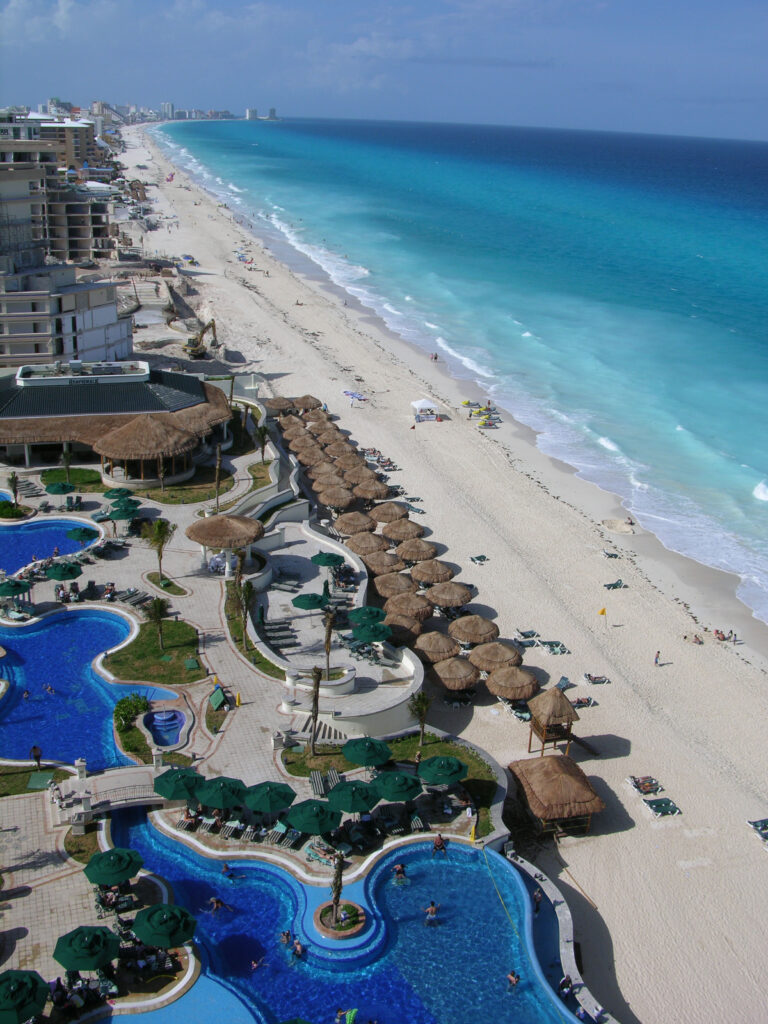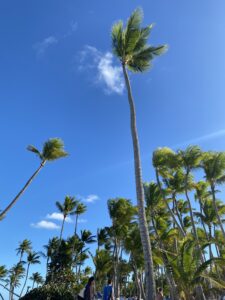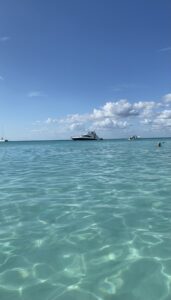By Carter Roy | Scribe
“We regret to inform you that you have tested positive for COVID-19, you will have to stay here and quarantine- the hotel doctor said”
Going on vacation and receiving a positive COVID-19 test a day before coming home and spending the most important holidays away from friends and family was not on my itinerary when traveling to the Dominican Republic.
When my friends and I booked this trip, we hadn’t traveled since the global pandemic and we needed a break from the usual city noise in Toronto. Despite warnings to only travel for essential purposes, because of increasing COVID-19 cases, we never thought one of us would’ve gotten the virus.
Getting to the country was easy, because I had a direct flight. They didn’t have any COVID-19 testing or vaccination policies to enter the country, so immigration was fast and easy.

As soon as I stepped outside the airport, I felt the humidity and admired the beautiful sunrise glaring on my skin. At that moment, I felt so happy that I was finally here. When I got to the resort, I checked into my room and ran straight to the beach. My friends and I kicked around the sand and water, spraying each other like we were kids playing games.

The next morning when I woke up I was freezing and felt like every part of my body was ice cold. I figured it was because of the air conditioning. However, as the day progressed, I developed a runny nose and slight cough. “Maybe it’s just temperature shock,” I told myself. Later in the evening my shivers went away so I proceeded with the fun.
Two days before leaving, we got our polymerase chain reaction COVID-19 tests (PCR) which we needed in order to re-enter Canada and the day before leaving everyone got their negative results, but I didn’t get mine.
However, later that day when I got back to my room the phone rang. I picked up and the person said, “Hello, I’m the hotel doctor, can I speak with Mr. Roy?”
I knew exactly what this was about.
“We regret to inform you that you have tested positive for COVID-19, you will have to stay here and quarantine,” the doctor said. I was in absolute shock. I never thought this was going to happen. I was upset at myself and felt overly anxious about what was going to happen.
My friends were advised to take their flights home and I was left alone, quarantined, in Dominican Republic.
According to Statistics Canada, 742,400 Canadians re-entered the country by air in December 2021 after a vacation, despite warnings of only traveling for essential purposes due to the rising COVID-19 cases. The number of re-entries is almost two thirds of the number from December 2019, pre-pandemic.
Alyssa Kennedy is a flight attendant with Air Canada and says working on and off throughout the pandemic has been an interesting time. During the early days of the pandemic, there was a tremendous amount of fear. Flight attendants wore proper personal protective equipment, including medical gowns, gloves, face masks and face shields.
“At the beginning people followed the rules, but now as restrictions loosen people are like we’re done, we see the restrictions being lifted everywhere else,” Kennedy said.
“I see them, I hear them, but it’s federal law and it states that you need to wear a mask. Everyone needs to. Even I have to wear my mask, and if I’m not, someone should tell me to wear my mask. It works both ways,” she said.
“We have deplaned because people don’t comply with the rules. If flyers don’t listen to the rules, it is a US$5,000 fine, or they will get deplaned. Most usually stick it out, but we’ve had arguments with some people, unfortunately,” Kennedy said.
As of April 1, 2022, fully vaccinated travelers will no longer be required to have a pre-arrival COVID-19 test when arriving in Canada. Passengers may still be selected for random PCR testing upon arrival and the ArriveCAN app must still be filled out 72 hours before arrival to show proof of vaccination and a COVID-19 symptom questionnaire.
Transport Minister Omar Alghabra announced the changes to the federal government’s policy. “Decreasing COVID-19 case counts, coupled with Canada’s high vaccination rates and strict vaccination requirements for travel, have set the stage for the next step in our Government’s cautious and calibrated approach to safety easing the measures at our border,” he said in a statement in March.
“Lifting the pre-entry testing requirements for travelers to Canada will make it easier for Canadians to safely take advantage of emerging opportunities for personal and business travel, as the country’s transportation system recovers from the pandemic,” Alghabra added.
While I was quarantining, I watched a lot of Netflix series and had all my meals brought to me, since I wasn’t allowed to leave the room. I was very bored most days but so thankful the symptoms I was experiencing were now all gone. Other than streaming movies, I spent my time facetiming with friends and family. They don’t know how happy it made me whenever they called, after day four of being locked inside, just talking with them helped me beyond words.
Thankfully, the resort I was staying at didn’t make me pay for my extra time there. A travel tip: always buy the medical and health travel insurance when booking, it saved me from not having to pay out of pocket for the extra days at the resort!


After 10 days of quarantine my PCR test was finally negative. I was beyond relieved. I booked a flight for the next morning and went to the buffet to enjoy one last meal.
The next morning I headed to the airport in Punta Cana. I was surprised at how simple the check in was. I showed my passport, negative test results, filled out the ArriveCAN app, and I was onward to find my gate.
When I landed back at Toronto Pearson International Airport I was expecting immigration to be packed since it was just after New Years, but I was wrong.
There were about 10 people. I was shocked. But this meant no waiting, so I was enthralled. I spoke to the immigration officer and he placed a green sticker on my passport, meaning I was not selected for random PCR testing. I was thankful the process was easy.
Originally, I was supposed to arrive back in Canada on Dec. 23, 2021. That week there were more than eight thousand PCR tests done by random selection for travelers arriving by air in Canada. Of those tests, there was a 2.32 per cent positivity rate. When I got back to Canada in the first week of January 2022, there was a 8.65 per cent positivity rate from 129,281 tests completed, a steady positivity incline, according to the Government of Canada and the Public Health Agency of Canada.
Getting COVID-19 in a different country was not something I thought was going to happen, but I’m happy I was still able to cross another country off my travel list. I was happy that I was able to support airlines, hotels, people, businesses and places in Dominican Republic.
When I went to different shops and bought souvenirs, food or went to dinners, the people were so happy that we were supporting them. Even before this trip I couldn’t help but think how much revenue this country probably lost from tourists.
Ron Caughlin is the program coordinator at Humber College for the hospitality and tourism operations management program and says it’s been devastating for everyone working in the travel industry.
“There’s been a lot of chaos, from hotels to airlines, and suppliers in the industry. So many workers have been laid off and left the category all together,” Caughlin said.
On the brighter side, as restrictions ease Caughlin said many jobs and opportunities are starting to open up because of people who had left the industry during the pandemic.
“It’s a great time for those wishing to get into the travel business,” he said.